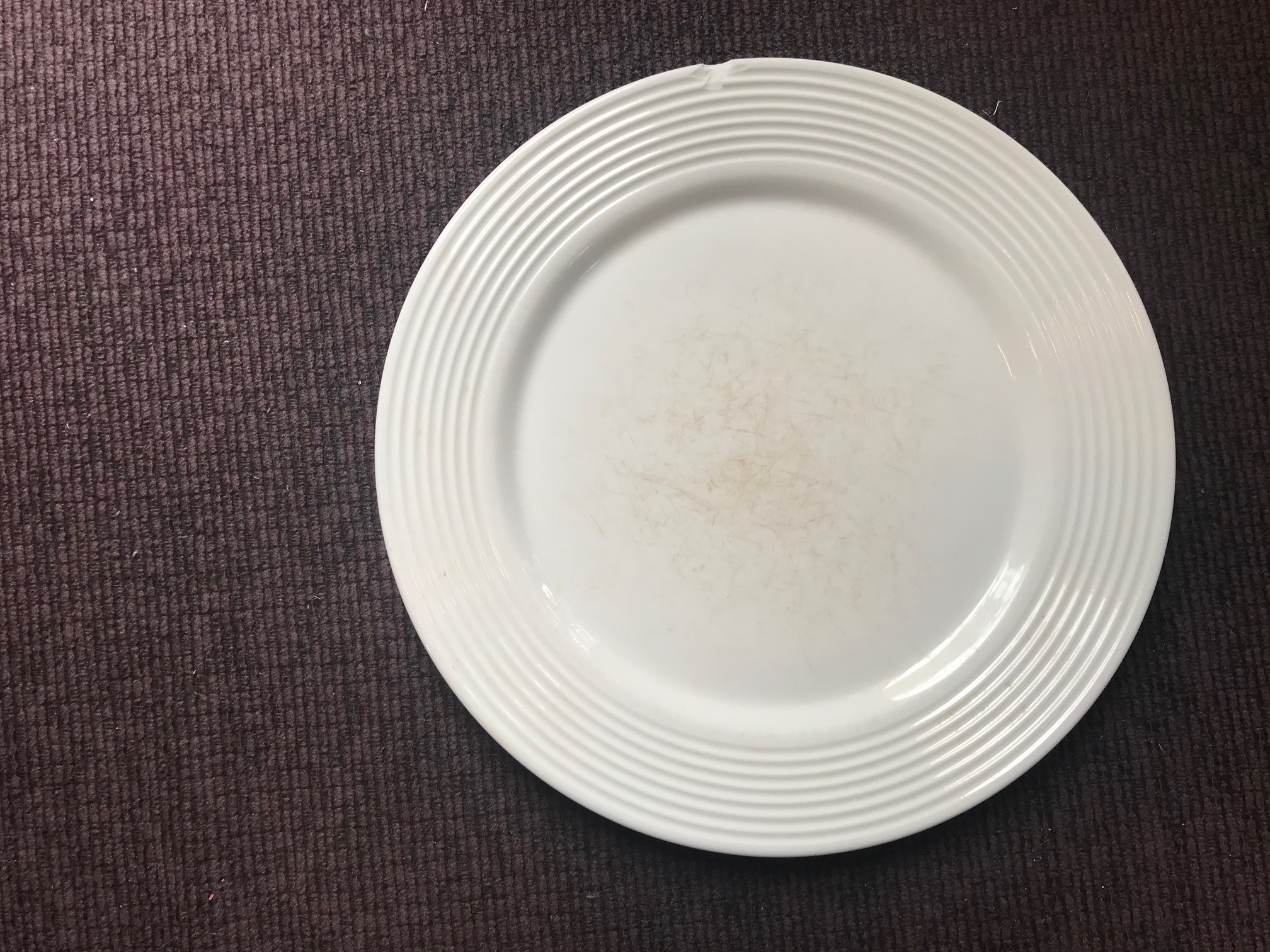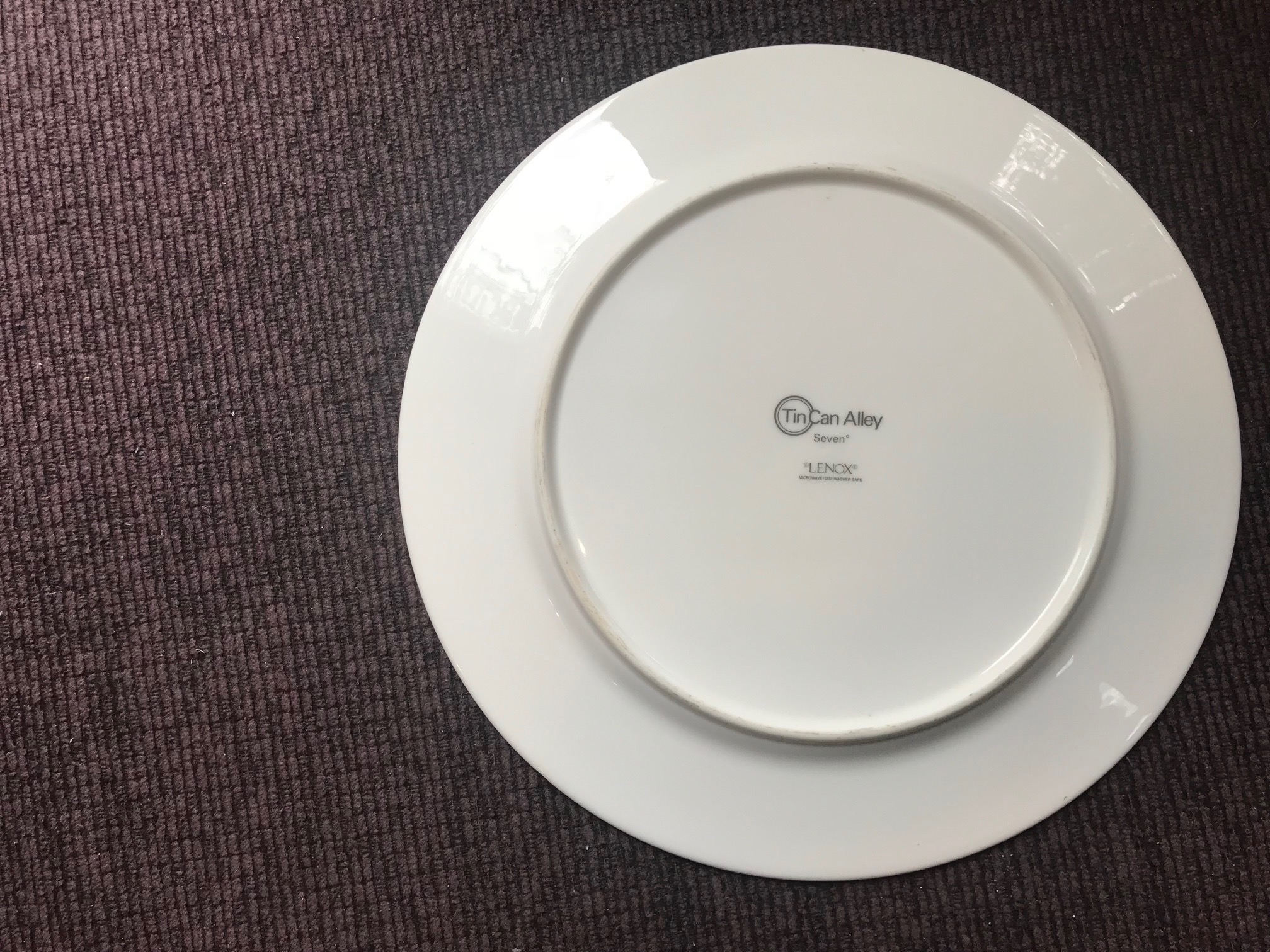XRF Test Results For Lenox Tin Can Alley “Seven” Dinner Plate
Lenox Tin Can Alley “Seven” Dinner Plate
Food Surface/ Front of Plate
- Lead (Pb):
- Test One: 114 +/- 18 ppm [center of plate]
- Test Two: 76 +/- 17 ppm [ridged edge of plate]
- These levels of lead would be considered safe by all standards
Other Elemental Metals (Food Surface Side of Plate):
- Zinc (Zn): 1,043 +/- 76 ppm
- Copper (Cu): 177 +/- 47 ppm
- Iron (Fe): 1,742 +/- 223 ppm
- Vanadium (V): 943 +/- 156 ppm
- Titanium (Ti): 350 +/- 125 ppm
- Zirconium (Zr): 3,739 +/- 100 ppm
- Platinum (Pt): 129 +/- 55 ppm
To learn more about XRF testing, click here.
Black Text of Logo on Back of Plate
- Lead (Pb): 2,223 +/- 83 ppm
- Logos printed on the back of dinnerware are often very high lead!
- Cadmium (Cd): 31 +/- 9 ppm
For context: The amount of lead (as detectable with an XRF instrument) that is considered unsafe in a modern item manufacture for use by children is anything 90 ppm lead or higher in the paint/glaze/coating or 100 ppm or higher in the substrate. In the case of ceramic dishes the “substrate” would be the base clay used for the dish.
The total lead content for dishware (as detectable with an XRF instrument) is not regulated (unless it is dishware expressly designed and sold to be used by younger children.)
To read more about the concern for lead in dishware, click here.
To see more Lenox pieces I have tested, click here.
While the amount of lead on the back of this plate might seem alarming… I have test a LOT of Lenox brand dishes, and several tested positive for significantly higher levels of lead:
- Click here to see a Lenox dish that tested positive for 61,513 ppm lead.
- Click here to see a Lenox dish that tested positive for 1,266 ppm lead.
- Click here to see a Lenox dish that tested positive for 349,000 ppm lead.
- Click here to see a Lenox dish that tested positive for 85,000 ppm lead.
As always, please let me know if you have any questions!
Thank you for reading and for sharing my posts!
Tamara Rubin
#LeadSafeMama
Never Miss an Important Article Again!
Join our Email List






Your site is so informative. Thank you for all your work. I was wondering if you know when the 7 degree plate that you tested was purchased. I just received multiple sets of both the 7 degree and 4 degree Lenox dinnerware from January 2019, and am now worried. Also, how do I read these results (i.e., do I look at the first or second number?
It was my plate. I received it as a wedding gift in 2008.
Thank for your information. I’m also a research-everything kind of mom, but I won’t ever be able to catch up with your knowledge and energy for advocacy. YOU ARE AMAZING!!!
And oh my goodness, this Tin Can Alley Seven Degree is the favorite dinnerware my family uses (including our 12 years old son) every day, and your test result says 114 +/- 18 ppm at the center of the plate. It’s more than 90 ppm!! I’m still in shock and my mind is still in denial mode… but this means that this dinner plate may be leaching lead at a dangerous level for children 12 and younger, right…???
Tamara, do you know if this level of lead (114 +/- 18 ppm at the center of the plate) should require the manufacturer, Lenox, to put the California Prop 65 Warning on it (because I didn’t see the warning when I purchased them)? I don’t know how to compare CPSC’s threshold for children’s products (90 ppm) and California Prop 65 warning standard for lead (0.5 mcg/day)…. those different units by different government agencies are so confusing to consumers 🙁
I also have this set (the four degree) that I received as a wedding gift in 2008. I’m curious if you still use these after your testing or if you got new dinnerware? I was unsure if the stamp could leech to the top of the plate or not. Thank you!
I actually decided to stop using these. I am not sure if there is a real risk of leaching, but I figured better safe than sorry for something used multiple times a day. I switched to Corelle and love them.